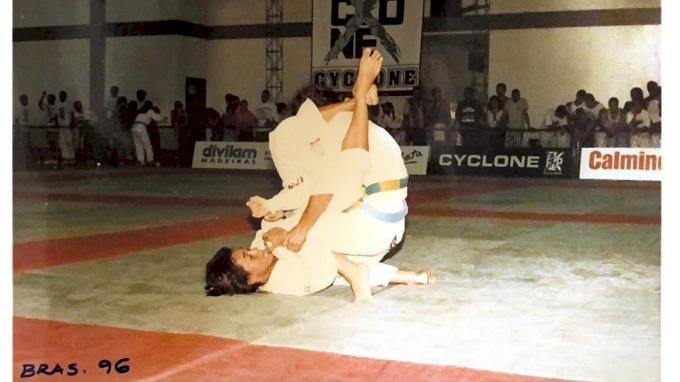Historic Number Of Women Registered For Brasileiros 2023
Historic Number Of Women Registered For Brasileiros 2023
The 2023 IBJJF Brasileiro hit a milestone for the most registrations in the tournament's history, and the most female registrations in organization history.

With 8,000 competitors registered for the 2023 CBJJ Brazilian Nationals, this event holds the record for the most registrations ever. It’s a huge milestone for the tournament, and for the jiu-jitsu world, demonstrating the growth of the sport year over year.
The new record is also a new milestone for women’s jiu-jitsu, as the 2023 Brasileiro appears to be one of the best-attended by female participants in the history of the sport.
The first Brazilian Nationals were held in 1994 for both males and females. That year, there were only five women in the tournament, all of them blue belts.
Two years later, 1996, marked an important growth overall. The pool of weight, age, and rank categories for women expanded from just six divisions to 25; and the women’s divisions grew to include purple belt and juvenile blue belt divisions.
Letícia Ribeiro earned her first Brazilian Nationals title as an adult blue belt featherweight in 1996.
“It’s rewarding to see Brazilian Nationals and Worlds nowadays, with the largest number of women entered in the history of the sport in all divisions and belts,” said the legendary Letícia “Letty” Ribeiro in an exclusive interview with FloGrappling.
Letty recounted her first title: “I remember the beginning of my journey. My first Brazilian National was in 1996 as a blue belt featherweight. It was already the biggest weight division at the time," she said.
In 1998, more divisions were added, and women competed across 76 divisions. Also, more kids divisions were added, and Kyra Gracie had her first appearance and won her first title at Brazilian Nationals, in the junior 1 lightweight when she was a yellow belt.
That same year, only one woman registered in the black belt division: Patricia Lage, one of the first women ever to achieve the black belt rank.
In 2007, Luiza Monteiro won her first Brazilian Nationals title as a blue belt (medium-heavy division). Now 16 years later, Luiza is heading to Brazil in search of her 6th black belt title.
While the number of divisions available to female athletes has continued to expand over time, many of them remained empty — or virtually empty — through the last decade. Not too long ago, in 2016, 50% of black belt female divisions had only two participants.
- This year, every adult female division includes a loaded bracket. Starting with the adult female white belt, the most populated division is the lightweight (10 women total), which means at least three matches to become a champion.
- The blue belt featherweight division is the most populated women’s division of the whole tournament;: 54 women are registered in the featherweight division. There are 39 in the lightweight division.
- In the purple belt, 32 women are registered in the lightweight division, 31 in the featherweight division.
- In the brown belt, the most populated weight division is lightweight, with 20 women in total.
The black belt divisions are a bit less crowded; there are 71 female black belts registered in total. However, it is important to note that out of the 71 registered women, 7 are non-Brazilians, a sign that the event once considered a trial by fire for foreigners is becoming more popular and sought after. The first non-Brazilian black belt female to win a Brasileiro was Ffion Davies in 2019.
Leader of Gracie South Bay, Letty remembered that, in her time, the Brazilian Nationals were the only tournament without belt mixing at the time. Most other tournaments combined female belt divisions to increase competition.

Leticia Ribeiro at Brasileiro in 1996
"From the very beginning, everything was divided. There were all weight classes in the women's division and it's always been that way”, she said.
Letty explained that the World Championship had a combined division for all women’s belt ranks. Although the Worlds started in 1996, women's divisions first appeared in 1998 in the third edition.
“All the belts competed together in only two different weight divisions: -60kg and +60kg. It wasn't until the Worlds moved from Brazil to the United States that the purple belts split up into a new division,” she said.
The purple belt division arrived in 2005 and the brown belt and black belt division were split in 2012.
“Today, we can see the evolution of the female division in the sport. I’m glad to have helped to spread our sport in Brazil and worldwide, to now be able to see a packed women’s division and appreciated for everything,” Letty said.